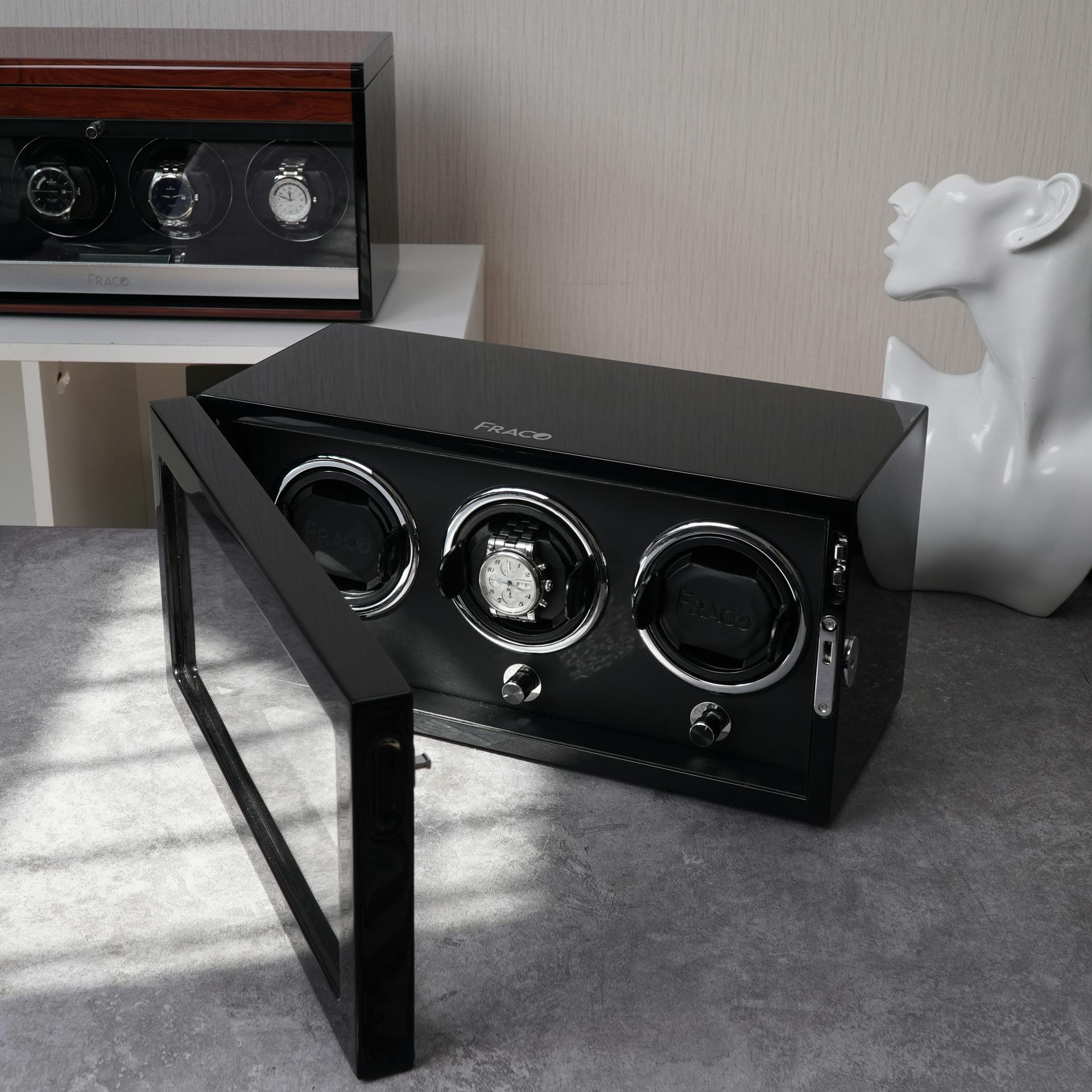
How to Hide Valuables in Your Home
Rising burglary and home invasion rates and greater government intrusion into our lives are some of the more popular and valid reasons one might consider hiding property or valuables from others.
Also some folks facing asset seizures or hiding assets from family members. There are many good reasons for hiding money, cash and valuables.
Some of the more common hiding places for cash or valuables are home security safes, decoy safes, gun safes or some sort of specialized money safes.
Sometimes the best hiding places are right in plain sight in your own home; you can hide things in your home in such a way that you wont have to spend a cent on some expensive home security safe.
How and where you hide your valuables or contraband will depend on three important things. The first, decide whatever it is that you are trying to hide. It is precious coins or jewelry? a stamp collection from the 19th century? money? love letters, Teflon coated bullets, a silenced rifle, photos with you and the farmer's daughter next door? Chemicals when mixed can poison half the neighborhood, or even perhaps yourself?
The second is whom are you trying to hide it from? It is a burglar, nosy relatives or landlords, the police, or if you are really luckless the mafia? This is important because a two-bit thief may not be too smart, will just snatch loot what can fenced quickly (electronics, jewelry), and likes to be in and out as quickly as possible (usually ten to thirty minutes).
The police on the other hand armed with a search warrant will be very thorough, may used special equipment (like metal detectors, x-ray machines, or ground-penetrating radar), and will have unlimited time.
Lastly, if your stash was found what would be the consequences- embarrassment, blackmail, loss of savings or income, arrest and prison, divorce, serious injury, or maybe even death? In step one, you weigh the cost/benefit of hiding things.
Once you've answered those questions you can decide how to make your hiding place. Obviously, don't use well known places-avoid anything in the bedroom including dresser drawers, closets, inside clothes pockets or socks, and under mattresses or pillows.
This would the first place anyone would look. Likewise, avoid the medicine cabinet and any hiding place visible from the front door of your house. If the objects are really sensitive you may better hiding it off the premises. Perhaps you could keep it with a trusted neighbor, relative, or employer.

How to Hide Things in Your Home
- Bar of soap. Split the soap lengthwise with a warm butter knife, hollow out a cavity, insert the stash, reseal with a powerful adhesive, and using a warm knife smooth the outside edge. Also roughen the appearance of the soap.
- Stick deodorant canister. Remove the top from an empty canister and push down the platform which held the deodorant. Scrub the canister clean, let it dry, and then add your stash. Replace the canister among other toiletries.
- Heels of shoes. Hollowed out from the inside.
- Canned goods. Remove the label carefully. Pierce a small hole in the center of the seam. Apply heat to the seam with a mini-torch until the solder runs absorbing it with a solder wick. Pry the tin apart carefully with a screwdriver. Then with tin snips makes two small slits at the top and bottom of outside edge. Insert the stash, reseal the edges, and re-solder the seam. Tidy up the rough edges with auto body repair filler and replace the label.
- Toothpaste tube. Slit the bottom of the tube with a razor then using a pencil squeeze out the contents into an icing bag. Insert the stash, refill the original contents, and glue the bottom back together.
- Grease gun. Place the stash at the bottom then pack the gun with grease.
- Vaseline or cold cream jar. Scoop 2/3 of the contents out, insert the stash, and then heat the scooped out contents and pour it back in the jar.
- Paint cans or any other thick, non-clear liquid. Seal the stash in a heavy plastic bag with weights inside to insure it stinks to the bottom.
- Postal system. Pack the item well, seal it in a plastic bag, and wrap it with paper designed to protect film from X-rays. Insure the package too for good measure.
- Bicycle pump. Remove the piston assembly from the inside, shorten the rod, and insert the stash.
- Pottery or clay ashtrays, mugs, or teapots. Insert the stash in the clay prior to molding the pottery.
- Soccer ball. Using a sharp knife, cut along the sides of the patches and open it like a flap. Insert the stash and secure it with tape. Then resew the flap and apply a thin layer of clear cement.
- Large sponge. Cut it into two sections, hollow out a cavity into the lower section, insert the stash, and reseal. Then, doctor the sponge with bits of dirt, old soap, and pubic hair to deter handling.
- Polystyrene packaging. Using a blade cut a slice and cut out a cavity. Insert the stash, replace the slice, and secure with polystyrene cement.
- Fake bricks. Construct a wooden mold modeled on a real brick. Pour in plaster of paris or cement half way, put in the stash, and pour in the rest of the plaster or cement. Be sure to seal the stash in heavy plastic bags and it must NOT be heat sensitive.
- Loaf of bread. Make a cavity inside the middle of the loaf, insert the stash, and rewrap the bread.
- Flowerpots or window boxes. Very well known but it still works. Make a false bottom in the pot or box, insert the stash, replace the flowers and soil on top.
- Box of breakfast cereal. Carefully open the inside bag, pour out the cornflakes, insert the stash, and pour the cereal back inside.
- Drainpipe. Lift the cover, attach a string to the stash and the cover. Drop the stash down the pipe, and replace the cover.
- Aquarium. Best used if it has dangerous fish like piranhas or electric eels and hide the stash inside the gravel.
- Refrigerator/freezer panel. Wear gloves to protect against the insulation inside first. Then unscrew the panel, insert the stash, re-screw, and clean up the area.
- Food. Hide the stash inside half gallon tubs of butter, bags of flour or sugar, baked cakes and pies, stuffed turkeys, ice cream, jars of peanut butter, mayonnaise, cooking fat, smelly foods (fish), sour milk, fruit juice, or a block of ice.
- Picture frame. Take out the board behind, lay the stash flat in the frame, and put the board back on.
- VHS tape. If the stash is flat or thin, take an old VHS that none is likely to listen or steal for that matter and put it inside.
- Homemade candle. Using a glass jar or other mold pour in paraffin wax (melted on a double boiler) halfway, insert your stash (protected in plastic), pour in the remainder of the wax and let it cool.
- Large bag of dry dog food or kitty litter. Empty out the contents, place stash on the bottom of the bag, and pour the contents back in. Cat litter is a rfantastic hiding spot for cannabis as it camouflages the smell.
- Base of a lamp. Open up the base of a lamp, insert the stash, and close the base
- Fake electrical socket. Buy a socket box, socket, and face plate at the hardware store. Cut out a hole in the sheet rock with a keyhole saw, screw the box to a stud, insert stash, and put on the face plate.
- Range hood filter. Remove the filter from the hood, put in the stash, and replace the filter. The filter should not look clean and new. Best to use a grease caked nasty filter to deter any handling.
- Toilet tank. Remove the cover from the tank, tape the stash to the cover, and replace the cover. For extra security put something heavy on top of the toilet tank.
- Pillows, stuffed animals, toys, dolls. Neatly cut a slit in one of these, remove enough of the stuffing to make room for your stash, insert the stash, pad the excess space with stuffing, and neatly resew the object.
- Hardcover book. Open the book and leaf through a third of the pages. Then with a utility knife and a ruler cut a square hollow from the center of the remaining second third of the pages. Remove the cut out section and glue the pages together inside of the square opening. Let the book dry and tape your stash inside.
- Electric baseboard heater. If the stash isn't flammable or heat sensitive this can be used. Make sure the heater is unplugged, remove the cover, insert your stash, and then replace the cover.
- Wall clock. Open up the back of the clock with a screwdriver, insert the stash, and replace the back.
- Vacuum cleaner bag. This is good to use on a non-functioning vacuum cleaner. Find a bag that fits the vacuum cleaner, put in your stash, fill the bag with crap (dust bunnies, dirt, whatever), and put the bag on the vacuum cleaner.
- Birdhouse. If your handy with tools you can build a birdhouse with a removable top and put it the backyard.
- Insulation. Wearing gloves, peel backs the flaps of insulation, tape in the stash, and replace the flap.
- Compost pile. The stinkier, the better- place the stash in a heavy plastic bag, duct tape it shut, and place it as far as possible inside. Some good sized roadkill can be placed inside the compost as well to attract files, maggots, and other vermin to deter any searching.
- Furniture. Cut a square opening in fabric underneath in a chair or couch, hide stash within the padding, and resew the opening very carefully.
- Mirror on door. Make a hollow behind a full length mirror on the closet door then mount the mirror on sliding tabs.
- Table or desk. Remove the molding and make a hollow, place in the stash, and replace the molding.
- Hollow core door. Cut a slot at the top, drop in the goods, and then fill the slot with wood putty.
- Clothes hamper. Empty out clothes, place stash at bottom, and replace clothes.
- False roof vent. Buy a roof ventilator, attach it to the roof, and put your stash inside.
- Mattress, box spring, or zippered cushions. Neatly cut an opening in the mattress or box-spring fabric, put in the stash, and carefully resew the opening. With the cushion, just unzip the zipper, put in the stash, and rezip it.
- Walls. Hollow out behind solid, fixed items (coat racks, boards)
- Dog house. Hide the stash inside or under the roof of any of these.
- Spare Tire. Deflate the tire, put in the goods, put air back in it, and stow the tire.
- Baseboards. Remove away a section from the wall, hollow out an area between the studs, insert stash, and tack back the section in place neatly.
- Acoustic ceiling tile. If you have acoustic tiles ceilings, simply remove a tile or two put in the stash, and replace the tiles.
- Fake air conditioner. Install a broken down air conditioner in the window, remove the faceplate, pull the internal unit, and discard.
- Fake duct work/plumbing/stovepipe. Either buy plumbing stock from the hardware store and install it going across the basement or better look for existing connections and add sealed dummies to them.
- Fake air intake. Cut a hole into sheet rock of the wall with a keyhole saw or a router, insert a metal box and screw it to a stud, insert the stash, and cover the box with a face plate.
- Fake beams. Ceiling and walls can have hollowed out beams. Sure this is a lot of work, but is safe from everything except maybe a house fire.
- Wall paneling. If your stash is thin and flat you can measure and cut paneling to a wall, attach the stash to the inside of the paneling, and then nail the paneling to the wall. You can even add baseboards and or molding if you wish.
- Fake hot water heater or washing machine. Take an old non-working heater or washer, put in dummy pipes into the plumbing, and hide the stash inside.
- Wooded Areas. Inside stump of old large trees in an area you are sure they are not going to be cut down.
- Nearby abandoned buildings. Inside old shafts, culverts, broken walls, loose floorboards, weed thickets. This is a great thing if you live beside or close to such a place.
- Underground "Caching". Bury the stash in large PVC water pipes. You will need PVC pipe, an end cap, a screw top end, PVC pipe cement, Teflon sealing tape, and a hacksaw. First cut the pipe down to the right size with the hacksaw. Then, prepare the surface on the end of the pipe with steel wool, apply PVC cement and stick the end cap on one end. Do the same to the other end with the screw top end.
Allow the cement to set for 24 hours. Drive out the moisture by turning the oven to its lowest temperature (this VERY important- PVC is plastic) for 15 minutes and take the pipe out. Prepare the stash by putting it in a sealed heavy duty bag with 2 oz. of desiccant (such as silca gel) in a sock.
If the stash is metal wrap it in cheesecloth, sit it overnight in a dry oven at 250 degrees, apply a coat of oil to it, wrap it in aluminum foil or wax paper, and then put it in a ziplock baggie with desiccant in a sock. Put in your stash, place Teflon tape on the threads, and screw the end on.
Bury the pipe vertically 3 feet deep and cover with 18 inches of dirt then place a part from the auto scrap yard like an alternator or carburetor in the hole and fill the hole. The auto scrap hopefully will act as a decoy for anyone deciding to use a metal detector. Burying the goods under an old abandoned car or refrigerator is another possibility.
For best results, bury more scrap metal randomly around the area and at different depths. A variation of this is to bury the goods next to a fence. Dig a hole next to the fence with a post digger and drop in a sealed PVC pipe with the goods. The fence will act as a decoy for the metal detector.
- Fake room. Install a metal or solid wood door with two deadbolts and line the interior with plywood.
- Private rental storage facility. This is probably the best way to hide anything from the anyone besides burying it. Rent out a storage place (maybe even in another town or state) using a liaison or an alternate name (never use your real name) and pay cash several months in advance for it.


Comments